CALL
NOTE: This next article is a reprint from Engineer,
December 1994, prefaced by an update from personnel at USMA who used the Sand
Grid . . . "3.
FIX THE BUNKERS AT RANGE 2 BEFORE CADET FIELD TRAINING 1995!!"
The above statement was a recurring After-Action Review (AAR) comment after Cadet Field Training at the United States Military Academy. Range 2 is used for the Fire Support Training committee and the 10-year-old sandbag gun emplacement bunkers had deteriorated past the point of repair; a "new look" was needed. We had the time to do this right, but the question was how and have a state-of-the-art field fortification. A review of FM 5-103, Survivability, June 1985, revealed no current design for a towed 105-mm howitzer position. However, FM 5-15, Field Fortifications, June 1972, contained a series of sketches that depicted such an emplacement from the Vietnam era. It was a starting point.
The article "Sand Grid: A Multipurpose Construction System," Engineer, December 1994, caught our eye. This looked to be the optimal solution for a low cost, long life and quick fix to our problems. The Field Artillery Branch Representative contacted the subject matter experts at the Engineer Center for a current design for the 105-mm Light Howitzer emplacements using the Sand Grid. Additionally, Alpha Battery, 1-7th FA, 10th Mountain Division, provided a schematic of a fixed gun emplacement from their TACSOP. The USMA Engineer Platoon, a combat heavy platoon with both horizontal and vertical construction capability, reviewed a composite design sketch synthesized from the source documents. Materials were ordered, and a time schedule was set. The gun emplacements needed to be completed NLT 30 May 1995 so summer training could start on schedule. The Engineer Platoon was ready to start their mission.
Construction went better than projected, and the four emplacements were done well ahead of schedule. It took about 14 hours per gun emplacement with a work crew of seven soldiers, a Small Emplacement Excavator (SEE) and two push-propelled compactors. We found that the sand grid for a 105 position, 30 pieces (8"x11'x5'), easily fit in a 5-ton cargo truck. The nature of the Sand Grid allows the emplacement to be taken apart and carried to the next location equally as well.
With the nature of Military Operations Other Than War (MOOTW) and Low Intensity Conflict, this is something that every field artillery commander should have as part of his basic load of supplies for deployment. The Sand Grid would work equally as well for base camp force protection measures that eat up precious manhours and are critical in the entry and lodgment phase of operations. The Sand Grid worked extremely well for us, and we propose that all units look seriously at incorporating this time-saving, expedient and economical force protection method into their go-to-war bag of tricks.
SAND GRID: A MULTIPURPOSE CONSTRUCTION SYSTEM
by Sergeant First Class Donald H. Purinton and Sergeant First Class Roger L. Harrison,Engineer School, Department of Construction Engineering
Military engineers build many types of structures. While a wide variety of construction materials are available, a geosynthetic called sand grid has been the most tested and proven. Although often overlooked by Army engineers, sand grid is an excellent method of field-expedient construction. It is made from high-density polyethylene and is used to confine and compact granular soils, such as sand, during the construction or repair of roads, airfields, field fortifications and other expedient structures.
DEVELOPMENT
Sand grid, known commercially as the Presto GEOWEB Cellular Confinement System, was developed at the U.S. Army Waterways Experiment Station (WES), Vicksburg, MS, during the late 1970s in a cooperative research effort between the U.S. Army Corps of Engineers and the Presto Products Company, Appleton, WI. The original concept involved confining and compacting sand or sandy soils in interconnecting cellular elements, called grids, to produce a load-distributing pavement base layer. The resulting design is honeycomb-like in appearance. When filled with sand, the grid can be used to expediently construct pavement structures in areas with poor trafficability. The fill material can be in-place or locally borrowed, poorly graded sands found almost anywhere in the world.
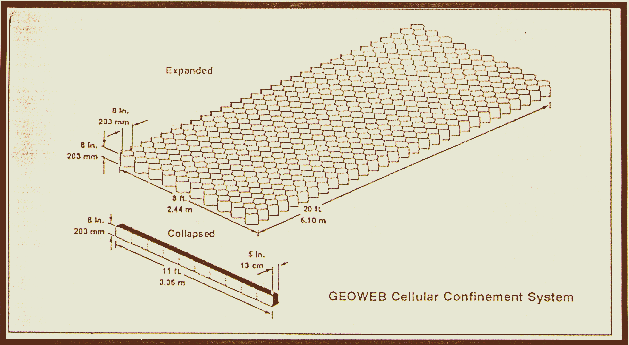
AVAILABILITY
Sand grid sections (National Stock Number 5680-01-198-7955) are expendable Class IV supply items that cost $181.00 each. The plastic grids are available in 11-foot by 8-inch by 5-inch collapsed sections that weigh 110 pounds each. When fully expanded, the sections measure 20 feet by 8 feet by 8 inches. Sand-grid construction is very economical, costing about $1.50 per square foot.
Sections of sand grid are pelletized for deployment and. are delivered in 3,000-pound pallets that contain 25 collapsed sections. One M872A1 40-foot trailer load of pallets contains enough sand grid to construct one-half mile of 16-foot-wide road. The sections are easily dismantled and collapsed for reuse.
USES
Sand grid is easy to use. And the basic construction procedures are the same for all of its many uses: expand and emplace sections, fill with soil, and compact.
Expedient Road Construction. Theater-of-operation road construction initially provides only a trafficable surface. These roads are built to accomplish a specific mission in the most direct and efficient manner possible. Designs are simple, require minimum skilled labor and use local materials whenever possible. In many theater situations, sand grid meets these construction requirements.
Sand-grid road construction greatly improves wheeled vehicle trafficability over sand and sandy soils. A squad-sized work crew can quickly construct a sand-grid road using scoop loaders, light bulldozers and vibratory compaction rollers. The use of rough-terrain forklifts; water distributors; asphalt distributors; long-handled, round-point shovels; and 8-foot by 4-foot by 3/8-inch sheets of plywood can increase the effectiveness and speed of construction.
Sand grid does not hold up well under tracked vehicle traffic. Tracked vehicles, however, have good trafficability through loose or cohesionless soils and can use shoulders outside of the staked right-of-way. To allow for tracked vehicle traffic, mark off a lane parallel to and near the sand-grid road. If tracked vehicles must cross the sand grid, protect it by placing a layer of gravel at the crossing.
Airfield Damage Repair. Following enemy attacks, engineers must repair airfields quickly, using the most expedient methods of airfield damage repair (ADR). The sand-grid method, using the GEOWEB Cellular Confinement System with a fiberglass reinforced polyethylene (FRP) matting cover, provides a suitable runway surface. It enables engineers to repair bomb-damaged runways quickly and efficiently.
The ADR kit used to repair bombed runways measures 18 1/2 feet by 7 feet by 19 1/2 inches. It contains eight 20-foot by 8-foot by 8-inch sand-grid sections, weighs about 5,310 pounds, and contains enough materials and equipment to repair a 25-foot bomb crater. The kit is air-transportable and can be air-dropped. Repair crews can adjust sand grid to crater dimensions simply by cutting and piecing sections together. Sand grid with an FRP matting cover can withstand 500 F-15 sorties, 200 C-141 sorties, or 300 C-130 sorties.
The resources required for ADR depend on the amount and type of damage, equipment and personnel available, materials on hand, and soldier expertise. As a general rule, one platoon-sized work crew for each bomb crater can quickly and efficiently repair a damaged airfield.
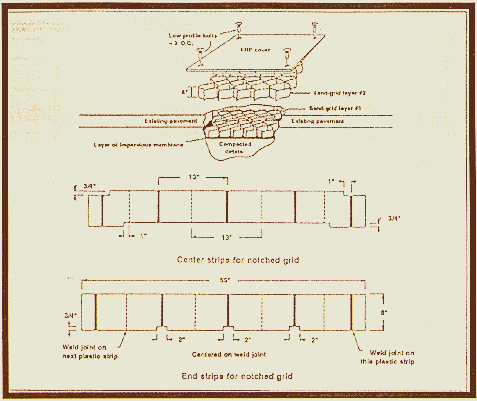
Field Fortifications. Survival on the battlefield depends on the quality of protection provided by fighting and protective battlefield positions. Field fortifications are designed to protect personnel, weapons systems, vehicles and equipment while deceiving the enemy.
Two types of sand-grid sections are available for constructing field fortifications:
- Standard sections are essentially the same as those used in roadway construction but are narrower.
- Notched sand grid is a standard section that has been modified to allow revetment construction with complete sand and soil confinement on the sides. It eliminates the need for a filter fabric between layers of sand grid and allows multiple layers to be filled. Notched sand grid can be constructed more rapidly than standard sand grid.
Sand-grid sections for field fortifications are manufactured in black, green and tan. Camouflage paint can be added to protect them from ultraviolet degradation and to reduce enemy detection. The sections are used to construct artillery positions, helicopter revetments, overhead protection, blast and fragmentation protection and bunkers. Sand grid is effective against small-arms field up to .50-caliber and near-miss artillery rounds.
Many advantages can be realized by using sand grid to construct field fortifications. For example, field fortifications made with sand grid--
- Cost 28 percent less than those made with sandbag revetment materials.
- Occupy 50 percent less space than those made with sandbags, although they weigh 15 percent more.
- Are more durable than those made with cloth sandbags and have a longer life expectancy. Some revetments made with sand grid are in good condition three years after construction, while sandbag revetments may require repair after only six months.
- Require from 40 to 70 percent fewer manhours to construct than those made with conventional sandbags.
- Take half the time to construct and yield the same amount of protection as an overhead protective cover system made with standard sandbags and loose earth.
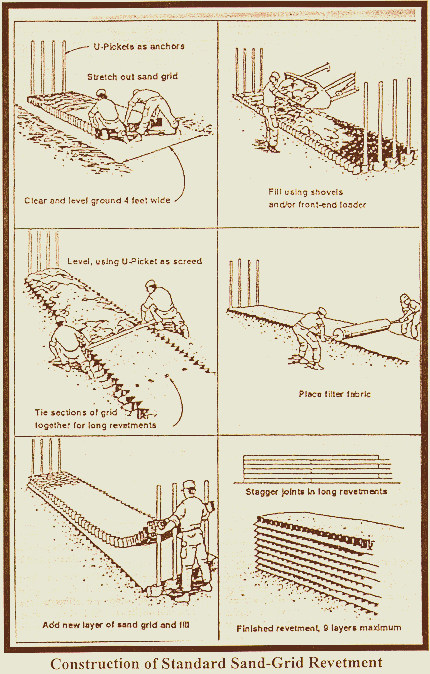
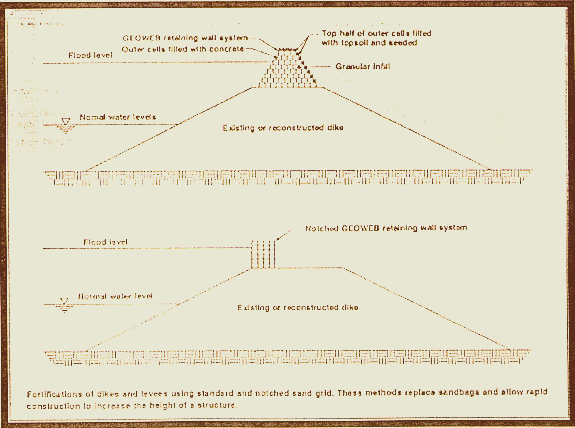
Other Expedient Structures. In addition to the uses already described, sand grid can be used for earth-retaining walls; drainage-channel linings; slope erosion control and stabilization; and river fords, dikes, and levees. Some examples follow:
- Sand grid can be used as protection for drainage channels. The St. Louis Metropolitan Sewer District (MSD) decided to use it as an alternative to reinforced concrete and concrete slab channel linings. They chose sand grid because it offered significant cost-saving benefits. By using sand grid, they eliminated the need to construct concrete formwork and the need for reinforcing steel and expansion joints. The sand grid provides a permanent, flexible form and serves as a series of expansion joints when filled with concrete. A cost-saving feature is that no overfill is required over the depth of the cells, which makes it easy to calculate the amount of concrete required. Since 1987, the St. Louis MSD has used sand grid filled with concrete for channel protection. They estimate that sand-grid construction costs about 30 to 40 percent less than traditional concrete construction.
- The U.S. Forest Service used sand grid filled with coarse aggregate to construct a 16-foot-wide by 40-foot-long river ford in the Chattahoochee-Oconee National Forest to replace a log stringer bridge. Replacing this bridge before sand grid was available required the construction of an 8-inch-deep by 14-foot-wide mesh-reinforced concrete ford, which cost from $6,000 to $12,000. The ford made with sand grid costs about $3,000.
- The great flood of 1993 will be remembered for many years. We all witnessed the destruction that took place as river waters crested and overtopped protective dikes and levees. The flood caused an estimated $20 billion in damages. The U.S. Army Corps of Engineers distributed in excess of 31 million sandbags to hold back flood waters. Most of the dikes and levees were reinforced with sandbags, and filling and placing them was time-consuming and required thousands of people.
It is possible to fortify dikes and levees with sandgrid construction. Using sand grid requires less time and fewer personnel than other methods, and it allows workers to rapidly increase the height of a dike or levee to prevent overtopping. Because of its loadsupport capabilities, sand grid can be built with heavy construction equipment, which significantly increases the construction rate. When sand grid is used to construct temporary dikes and levees, the structures also function as a temporary dam. WES evaluated a sand-grid system under conditions of varying water levels and wave actions to prove its usefulness. They concluded, "This type of structure, either temporary or permanent, holds promise as an expedient alternative to sandbag structures."
SYNOPSIS
Sand grid is a multipurpose construction system. It is an economical, effective and often overlooked resource that can be adapted to a wide variety of construction applications. Sand grid is available to military engineers and can be easily transported and installed. It requires less time, effort and maintenance than conventional construction materials. For more information on the uses of sand grid, call the Department of Construction Engineering, U.S. Army Engineer School, at (314) 596-0131 (Extension 3-7620/7610) or (Defense Switched Network) 676-7620/7610; or write to Commander, U.S. Army Engineer School, ATTN: ATSE-TCT-H, Fort Leonard Wood, MO 65473.
CALL NOTE: The diagram and photos that follow show how the USMA actually employed the Sand Grid system. The diagram shows the top view of the position. Photos 1-3 show various stages of construction and photo 4 shows one completed gun position. The POC is MAJ Glenn D. Reisweber, FA, Assistant Professor, USMA, DSN 688-4558 or commercial (914) 938-4558.
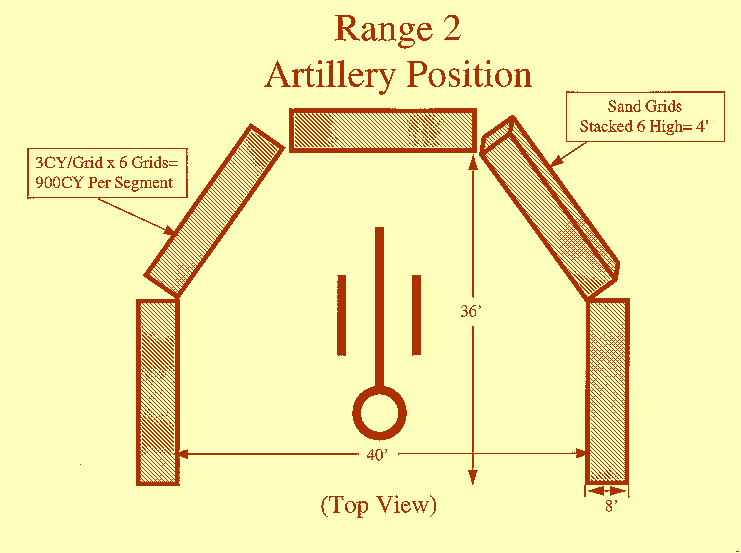
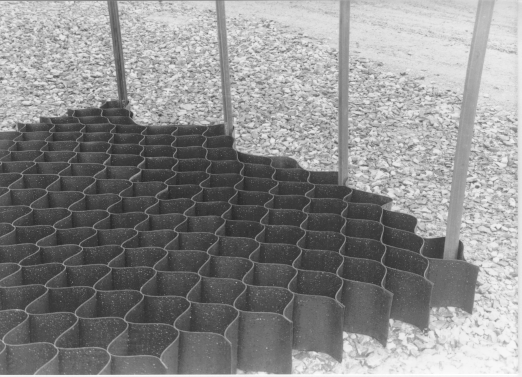 | 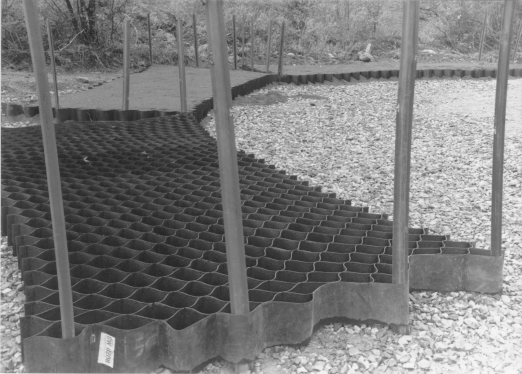 |
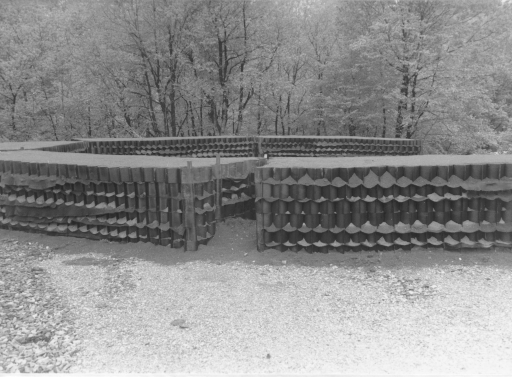 | 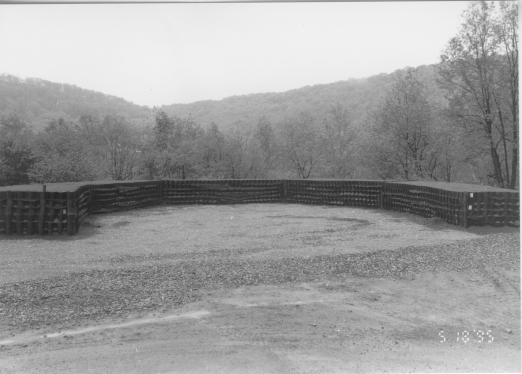 |
|
NEWSLETTER
|
| Join the GlobalSecurity.org mailing list |
|
|
|

